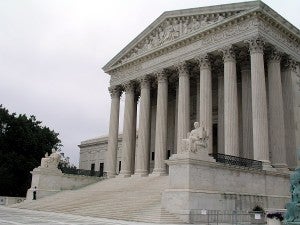U.S. Supreme Court Breathes New Life into FERC Order 745, Demand Response
 You’ve probably heard the saying “life is a journey,” but this could not be more true for EPSA v. FERC, the landmark demand response case clean energy experts have been eyeing for more than a year as it’s made its way through the U.S. legal system.
You’ve probably heard the saying “life is a journey,” but this could not be more true for EPSA v. FERC, the landmark demand response case clean energy experts have been eyeing for more than a year as it’s made its way through the U.S. legal system.
Starting in the D.C. Circuit Court of Appeals back in May 2014, EPSA v. FERC (also known as the “FERC Order 745 case”) now rests with the U.S. Supreme Court where, today, it was given new life when the Justices accepted the U.S. Solicitor General’s request for review submitted on behalf of the Federal Energy Regulatory Commission (“FERC”). Review was granted on both petitions, which have been consolidated, by FERC and Enernoc, et. al, case numbers 14-840 and 14-841. The Supreme Court granted review to both central questions, one about FERC’s authority and a second about challenges to central provisions to the order providing for fair valuation of demand response. Environmental Defense Fund (EDF), along with a broad coalition of consumer advocates and environmental groups, supported FERC’s petition before the Supreme Court earlier this year and will continue to do so as the matter is reviewed by the high Court.
The decision to review the case is great news for demand response, a voluntary energy conservation tool that relies on people and technology, not power plants, to affordably meet our country’s rising electricity needs. It’s also a welcome sign for the Federal Energy Regulatory Commission (FERC) – the government entity tasked with ensuring our electric rates are ‘just and reasonable’ – and anyone in favor of cleaner, more reliable, lower-cost energy.
Why is this decision such a big deal?
In 2011, FERC created Order 745 to provide a level playing field for demand response and fossil fuels to compete fairly, effectuating FERC’s central responsibility under the Federal Power Act to ensure “just and reasonable rates.” The Supreme Court’s decision to hear the case and potentially reverse the lower court’s unfortunate decision provides an opportunity for demand response to remain intact in our nation’s competitive electricity markets – ensuring its myriad benefits continue uninterrupted.
Over the past decade, demand response has saved customers billions of dollars that would have otherwise gone toward more costly polluting resources. In 2013, for example, demand response saved customers in the mid-Atlantic region $11.8 billion in lower electricity prices, without even accounting for the value of the environmental benefits.
This clean energy resource is also efficient because it taps into a wholly different way of meeting our energy needs. It balances stress on the electric grid by reducing demand for electricity, rather than increasing supply. This makes our grid more dynamic, reduces harmful air emissions from fossil fuel power plants, and keeps electricity prices lower.
The Supreme Court’s decision
The Supreme Court’s decision was not only welcome, but a sign of how important demand response is to our nation’s electric grid.
When the D.C. Circuit Court of Appeals decided against FERC, the deck immediately became stacked against Order 745. Any case going before the Supreme Court faces long odds: roughly 75-80 cases are heard by the Supreme Court each year out of the 10,000 petitions that are filed. For a case to be heard, the Justices must agree that the issue is one of significant national importance. It’s a view that many energy, environmental, and consumer experts share about demand response.
The road ahead
The Supreme Court’s decision to review the adverse lower court decision is welcome news for our economy and our environment, and means that demand response’s journey does not end here. EDF will remain active in defending the lawfulness of Order 745 before the Supreme Court, as we have from the beginning. From here, the future of this journey is unclear, but an important bridge has just been crossed.










